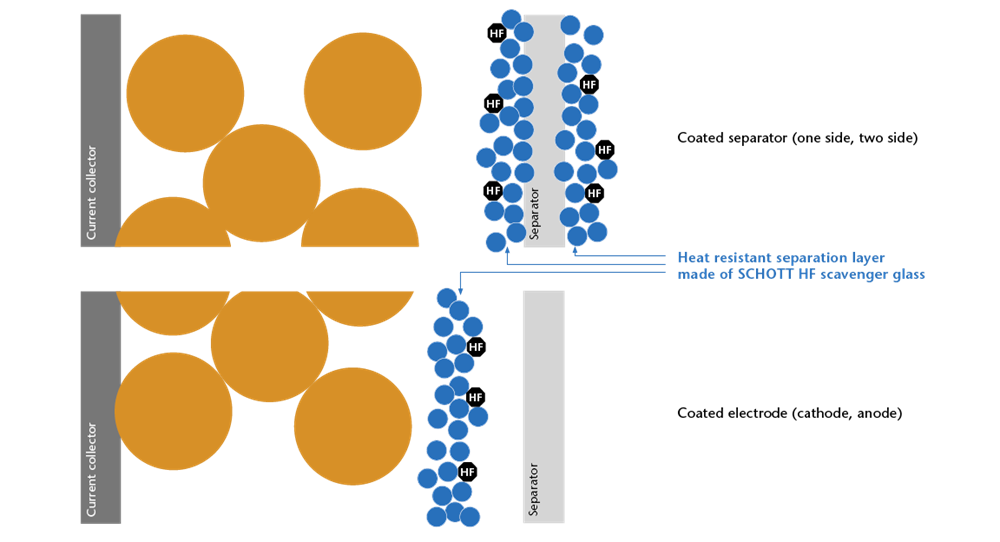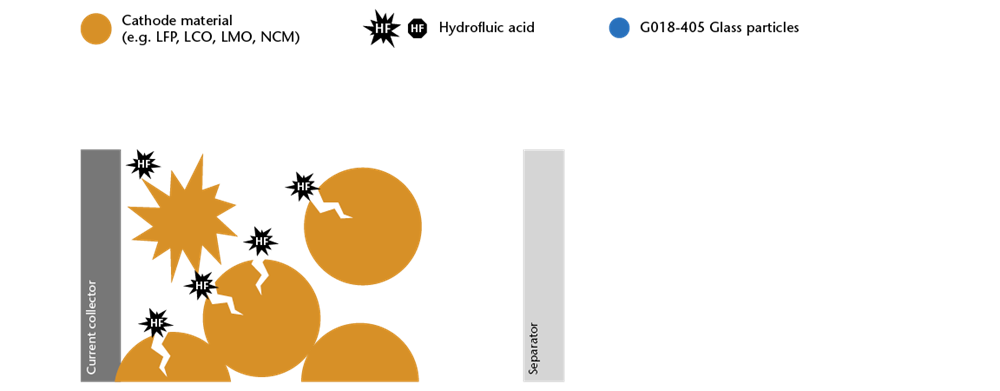Technical Details of HF (Hydrofluoric Acid) Scavenging Glass Frit
The HF-absorbing glass is sold under glass code G018-405. It is melted as standard under permanent control of physical and chemical properties. Further processing into a homogeneous powder with a defined particle size distribution is based on decades of experience in a specialized process. This creates a high quality product with reproducible properties.
Enhanced lifetime and safety through functionality
SCHOTT HF Scavenging Glass G018-405
| HF Scavenging Glass G018-405 | |
|---|---|
|
Glass powder grain sizes [µm] d(50) d(99) |
Standard (UF1.0) / Fine (UF0.7) 1.0/0.7 <7 /<5 |
| Specific surface are (BET method) [m2 f / g] | 5/8 |
| HF scavenging glass efficiency [mg F / g] | 40-60 |
| Max. operation temperature [°C] | > 600 |
| Hardness (Knoop) | 440 |
| Density [g/cm3] | 4.1 |
| Coefficient of thermal expansion (-30/+70 °C) [10-6/K-1] | 10.1 |
| Young's Modulus [GPa] | 68 |
| Wettability with electrolyte (contact angle bulk Θ) [°] | 15-30 |
Chemical Process
Integration I: HF scavenger particles as heat-resistant separation layer.

This offers a combination of safety and lifetime enhancement.
Intergration I: HF scavenger additive mixed with cathode material.


Local HF attack hindered by glass particles mixed with electrode material.

David Bühlmeyer
Sales Manager Europe